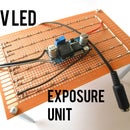Introduction: Electronic Decision Maker - 4046
In this instructable I will show you how I made an electronic "decision maker" with the 4046 - phase-locked loop.
What does that mean you ask? Well it's basically a coin flipper. You press the button to start the oscillation and then wait until one of the LEDs stabilizes.
If you need to decide between more than two states then you might be interested in electronic dice that I made in the previous instructable : Electronic dice with slowdown
Step 1: Demonstration
I was assigned to build this circuit at our school's electronics hardware competition by the name Zenit and with this layout I scored the first, although this was only regional round.
Step 2: Parts List
For this instructable you will need:
Decision maker PCB or some perfboard
1x - 4046
1x - 3.6V zener diode (can be omitted but then change R6 to 10k otherwise it won't behave properly)
1x - BC557 or any other small signal PNP transistor
1x - BC547 or any other small signal NPN transistor
1x - 1N4148 or any other general purpose diode
1x - tactile switch (I recommend the bigger one)
1x - 9V battery clip (6f22)
2x - 22µF/16V electrolytic capacitor
1x - 100nF ceramic capacitor
2x - 1kΩ resistor
1x - 2.2kΩ resistor
2x - 10kΩ resistor
2x - 100kΩ resistor
1x - 220kΩ resistor
1x - 1MΩ resistor
Optional:
1x - 16pin DIP socket
Step 3: Schematic and PCB
You can use a DC power supply in the range of 3-15V.
To make the schematic and the PCB I used a free program Cadsoft Eagle which I would recommend to anyone making schematics or PCBs.
Step 4: Etching the PCB
I did not make the video.
I etched the PCB with i guess "photographic method" - that would be the direct translation from my language. I printed out the PDF file from previous step on transparent foil and then shone through it on photosensitve PCB, then developed it in solution of sodium hydroxide and then etched it in ferric chloride. If you find it confusing just watch the video, It's very well explained. Also don't forget to orient the transparent foil on the PCB so that you can read the words written on it.
Step 5: Perfboard Version
This project is ideal to build on perfboard because of it's simple layout. So if you can't make your own PCBs you can still build your own decision maker! I also cut the top and bottom borders with an utility knife to make it a bit smaller.
Step 6: Conclusion
This was probably the most symmetrical PCB layout I've ever made and also won a competition with.















